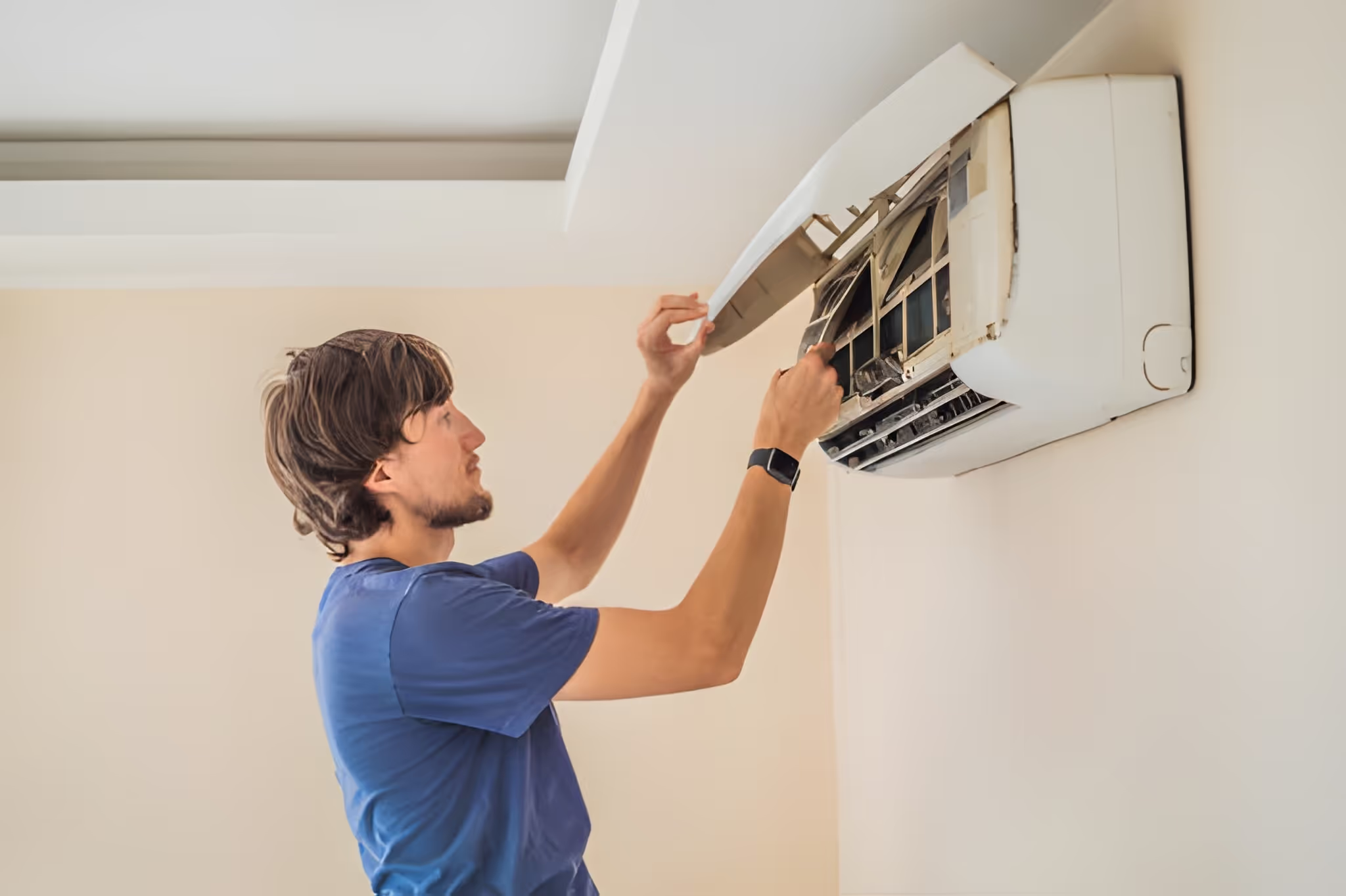Mini Split Maintenance in Justin, TX
Keeping your Mini Split running reliably and efficiently is especially important in Justin, TX, where hot summers, seasonal storms, high pollen counts, and dust from rural surroundings put extra strain on ductless systems. Proper Mini Split maintenance in Justin, TX reduces energy bills, prevents mid-summer breakdowns, preserves indoor air quality, and extends equipment life. Below is a clear, expert overview of what routine maintenance should include, common local issues, diagnostics technicians perform, typical solutions, and recommended service frequency.

Why preventative Mini Split maintenance matters in Justin, TX
Justin’s climate creates heavy cooling demand for long stretches each year. High operating hours increase wear on compressors, fans, and controls. Local dust and pollen clog filters and coils faster than in cleaner climates, and sporadic summer storms can cause moisture and debris buildup on outdoor condensers. Regular maintenance:
- Restores peak efficiency and reduces utility costs
- Lowers risk of sudden failures during peak heat
- Improves indoor air quality by removing trapped dust and allergens
- Helps maintain manufacturer warranty requirements
- Detects and addresses small problems before they become costly repairs
Common Mini Split maintenance issues in Justin, TX
Homeowners in this area frequently report:
- Reduced cooling capacity or uneven room temperatures
- Rising energy bills despite unchanged usage patterns
- Water leaking or overflowing from indoor units due to clogged condensate drains
- Noisy operation from failing fans or worn bearings
- Ice forming on evaporator coils during extreme humidity or low refrigerant
- Short cycling or frequent on/off behavior caused by control or refrigerant issues
- Musty or dusty odors from dirty filters and coils
Recommended maintenance frequency
- Filter cleaning or replacement: Monthly during peak season; at least every 1 to 3 months otherwise. Homes with pets or allergy sufferers may need more frequent cleaning.
- Full seasonal inspection and Tune-Up: Twice per year—spring (pre-cooling season) and fall (pre-heating season). These Tune-Ups prepare the system for heavy use and identify wear from the previous season.
- Coil cleaning and refrigerant/pressure check: Annually, or biannually if the system operates heavily or shows efficiency loss.
- Electrical and safety checks: At least once a year during a full service visit.
- Condensate drain and pump check: Annually and inspected during seasonal Tune-Ups; clear immediately if signs of blockage or overflow appear.
What a professional seasonal inspection covers
A comprehensive Mini Split maintenance visit typically includes the following steps:
- Visual inspection of indoor and outdoor units for damage, debris, or pest intrusion
- Filter cleaning or replacement and confirmation of proper airflow
- Evaporator and condenser coil cleaning to remove dust, pollen, and buildup
- Refrigerant level and pressure check with leak detection if levels are low
- Measurement of temperature split (supply vs return) to verify performance
- Fan motor and blower inspection and lubrication where applicable
- Electrical safety checks: terminals, connections, fuses, capacitors, and current draw
- Condensate drain and pump inspection and cleaning to ensure proper drainage
- Control calibration and software review for inverter-driven systems
- Performance tuning: refrigerant charge adjustments, airflow optimization, and thermostat control settings
Diagnostics explained in plain language
When performance issues arise, technicians use simple, effective diagnostics:
- Check airflow and filter condition first because restricted airflow is the most common cause of poor cooling.
- Measure the temperature difference between the indoor return air and the supply air to determine if the unit is achieving expected cooling.
- Test refrigerant pressures to confirm the charge is correct and to identify a potential leak if pressures are low.
- Inspect electrical components visually and with handheld tools for abnormal voltages or current draw that indicate failing motors or capacitors.
- Look for ice on coils and trace back to airflow or refrigerant faults.
- These steps pinpoint the problem so the repair is targeted, efficient, and cost-effective.
Typical repairs and solutions
- Filter and coil cleaning: Restores airflow and heat transfer; often returns efficiency close to original levels.
- Refrigerant leak repair and recharge: Sealing leaks and recharging restores capacity and prevents compressor damage. Leak repair is prioritized over mere recharge.
- Fan motor or capacitor replacement: Eliminates noise, restores full airflow, and prevents stall-related damage.
- Condensate drain clearing or pump replacement: Stops indoor water damage and prevents mold growth.
- Control board or sensor replacement and recalibration: Fixes short cycling and temperature inaccuracies.
- Outdoor unit cleaning and debris removal: Ensures proper condenser airflow, critical during high outdoor temperatures.
Benefits of an ongoing maintenance plan
Enrolling in a routine maintenance plan tailored to ductless Mini Splits offers measurable benefits:
- Consistent energy savings as systems operate at designed efficiency
- Fewer emergency service calls during Justin’s hottest months
- Longer equipment life by reducing compressor and motor strain
- Better indoor air quality through regular filter and coil care
- Documentation of maintenance for warranty compliance and resale value
Quick homeowner maintenance you can do between service visits
- Clean or rinse washable filters every 1 to 4 weeks during heavy use
- Keep the outdoor condenser free of brush, tall grass, and debris
- Ensure indoor unit intake and discharge areas are not blocked by furniture or curtains
- Watch for unusual noises, odors, water leaks, or noticeable performance changes and schedule a professional inspection if they appear
Final note on keeping Mini Splits reliable in Justin, TX
Because Justin experiences long cooling seasons, dust and pollen exposure, and occasional high humidity, a proactive maintenance approach is not optional for homeowners who want reliable comfort and low operating costs. Regular seasonal inspections, careful filter and coil care, timely refrigerant and electrical checks, and performance tuning keep Mini Splits running efficiently and protect your investment for years.

Flexible Financing Options
Explore our range of flexible financing options designed to suit your needs and budget.













